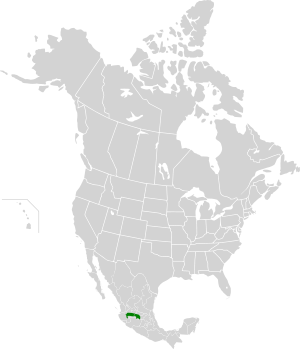Bajío dry forests

The Bajío dry forests ecoregion, of the Tropical and subtropical dry broadleaf forests Biome, is located in western Central Mexico.
Geography
The Bajío dry forests lie in the southwestern portion of the Mexican Plateau. They are bounded on the southeast, south, and southwest by the Trans-Mexican Volcanic Belt pine-oak forests, which occupy the folded mountains and volcanoes of the Trans-Mexican Volcanic Belt that form the southern edge of the Mexican Plateau. The Sierra Madre Occidental pine-oak forests of the Sierra Madre Occidental bound the ecoregion on the northwest.
The numerous mountains of the plateau which rise above the dry forests are occupied by sky islands of pine-oak forest. To the north, the Bajío dry forests transition to the drier, more temperate Central Mexican Matorral. Most of the ecoregion lies within the basin of the Lerma River, and the dry forests extend around Lake Chapala at the eastern end of the region, and into the endorheic basins of Lake Cuitzeo and Lake Pátzcuaro in the south.
Fauna
Native Mammals include Mexican wolf (Canus lupus baileyi) and pocketed free-tailed bat (Nyctinomops femorosaccus). Birds include the black-throated magpie-jay (Calocitta colliei), thick-billed kingbird (Tyrannus crassirostris), whiskered screech owl (Otus trichopsus), orange-fronted parakeet (Aratinga caniculanis), dwarf vireo (Vireo nelsoni), and black-polled yellowthroat (Geothlypis speciosa).
Development
The ecoregion is densely populated, and centuries of human use have reduced the dry forests to small pockets. Dry deciduous forest used to be the dominant vegetation, but thorn scrub and subtropical matorral are now more common, interspersed with agricultural and pasture lands. The cities of Guadalajara, Morelia, and Querétaro lie within the ecoregion.
See also
References and external links
- "Bajío dry forests". Terrestrial Ecoregions. World Wildlife Fund.